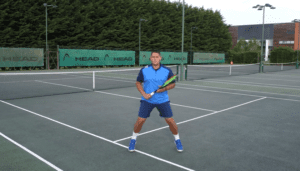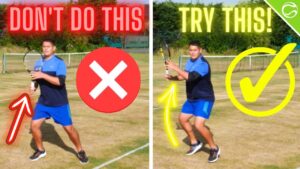
Tennis Doubles Guide
Tennis Doubles Guide
Let’s face it – doubles is a very different game compared to singles.
For many singles players doubles can feel like a completely new sport.
There are both physical and mental differences between the games.
Physical Differences In Doubles
In doubles, there are four players on the tennis court, instead of two.
Players can now hit the ball into the doubles alley.
You’re covering half of the court, meaning there is normally less running involved. Play can be much more erratic and you may not hit a shot in a few points.
Instead of having to worry about only one opponent, you now have two players to navigate.
Mental Differences In Doubles
The biggest difference mentally is not knowing if you will hit the next shot.
Or the one after that. You may not hit a single ball in a few points when playing doubles.
Since you now have two opponents to worry about, the court could feel much smaller.
Gaps are there, but you may feel like you have to hit “perfect” shots in order to get past two net players.
Single vs Doubles
Often players will be good at either singles or at doubles, even on the ATP and WTA tours we see this.
The best doubles players might compete in singles, but most don’t make it past the qualifying or early rounds.
Likewise, the best singles players occasionally play doubles but they tend to focus their energy on the solo game.
Rarely do you have a singles grand slam champion winning a doubles event at the same time.
There is a simple reason for this, singles players must train differently from doubles player.
In singles, you’ll have more side to side movement along the baseline.
In doubles, you’ll have more up and down movement, closing in on the net.
Points will be won differently, the shots used to win the points will be different.
In singles, many winners will come off the forehand wing. In doubles, many will come from a volley.
Watch our free doubles lesson on YouTube here.
How Can I Become A Better Doubles Player?
To become a good doubles player, a partner that players will want to team up with, it’s important to understand and work on the basics of doubles.
This includes:
- Being able to hold your service games
- Helping your partner hold serve by putting pressure on opponents
- Having a solid net game
- Being able to switch and intercept
- Solid returns go a long way
- Being able to use set plays with any partner
If you want more help with your doubles game, download our free doubles guide below.





